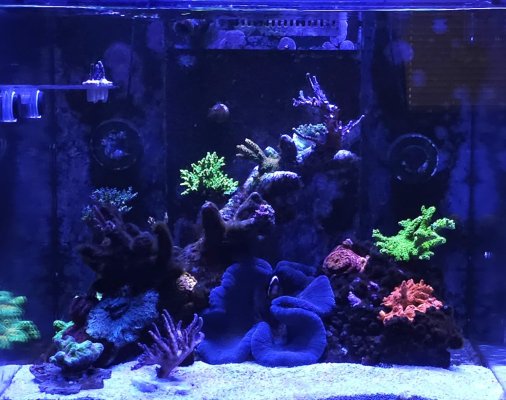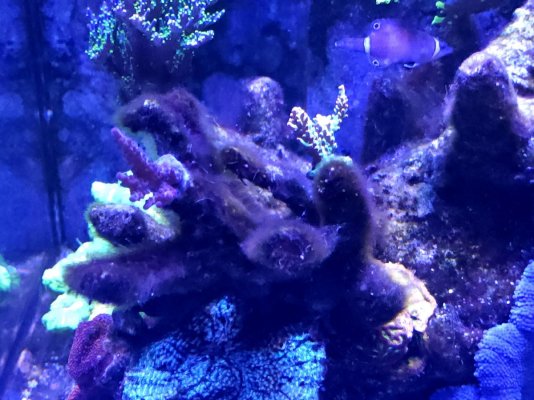When people ask for suggestions on removing hairy algae from their tank, one of the top suggestions is "manual removal"
I am not doubting those who have been successful with it, but I wonder if the "juice is worth the squeeze"
Because, unless "manual removal" means something other than "pulling" the algae off the rocks, or using something to scrub it off, those methods are easier said than done, at least in my experience.
Simply tugging the algae with your fingers and/or a siphon is extremely time consuming and it usually results in just tearing the algae, and not removing the "base" that is stuck to the rock.
Using a brush "may" remove the "base" of the algae if you're persistent enough but that just leads to different issues, including splashing of some of the water out of the tank. I have had a bit of success mitigating the splashing by actually using a cheap sonic-care type electric toothbrush that I bought at Walmart for 20 bucks, but it still didn't quite solve my hairy alage issues.
So what other "manual removal" methods are there?
I have one method that has worked for me several times, with no ill effects, but it is somewhat unorthodox. So in the interest of avoiding the "gasp!! You do that?!" replies, I won't mention it here, although I'm guessing some of you may already know what it is.
I am not doubting those who have been successful with it, but I wonder if the "juice is worth the squeeze"
Because, unless "manual removal" means something other than "pulling" the algae off the rocks, or using something to scrub it off, those methods are easier said than done, at least in my experience.
Simply tugging the algae with your fingers and/or a siphon is extremely time consuming and it usually results in just tearing the algae, and not removing the "base" that is stuck to the rock.
Using a brush "may" remove the "base" of the algae if you're persistent enough but that just leads to different issues, including splashing of some of the water out of the tank. I have had a bit of success mitigating the splashing by actually using a cheap sonic-care type electric toothbrush that I bought at Walmart for 20 bucks, but it still didn't quite solve my hairy alage issues.
So what other "manual removal" methods are there?
I have one method that has worked for me several times, with no ill effects, but it is somewhat unorthodox. So in the interest of avoiding the "gasp!! You do that?!" replies, I won't mention it here, although I'm guessing some of you may already know what it is.




















